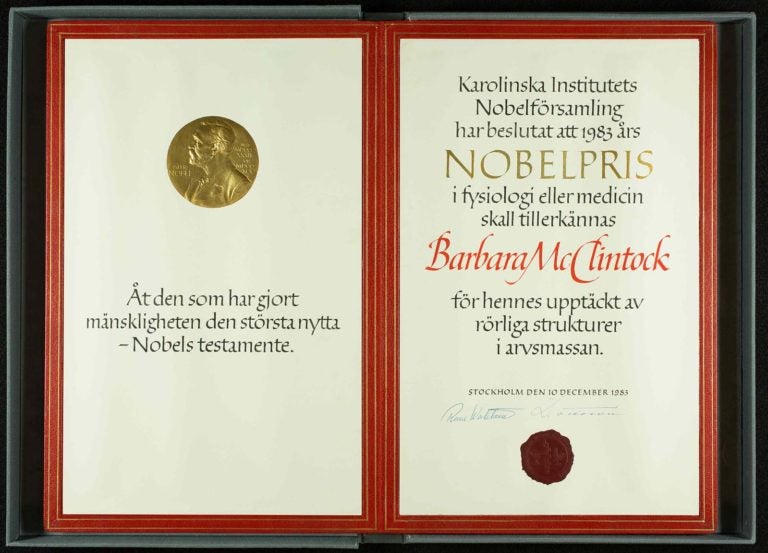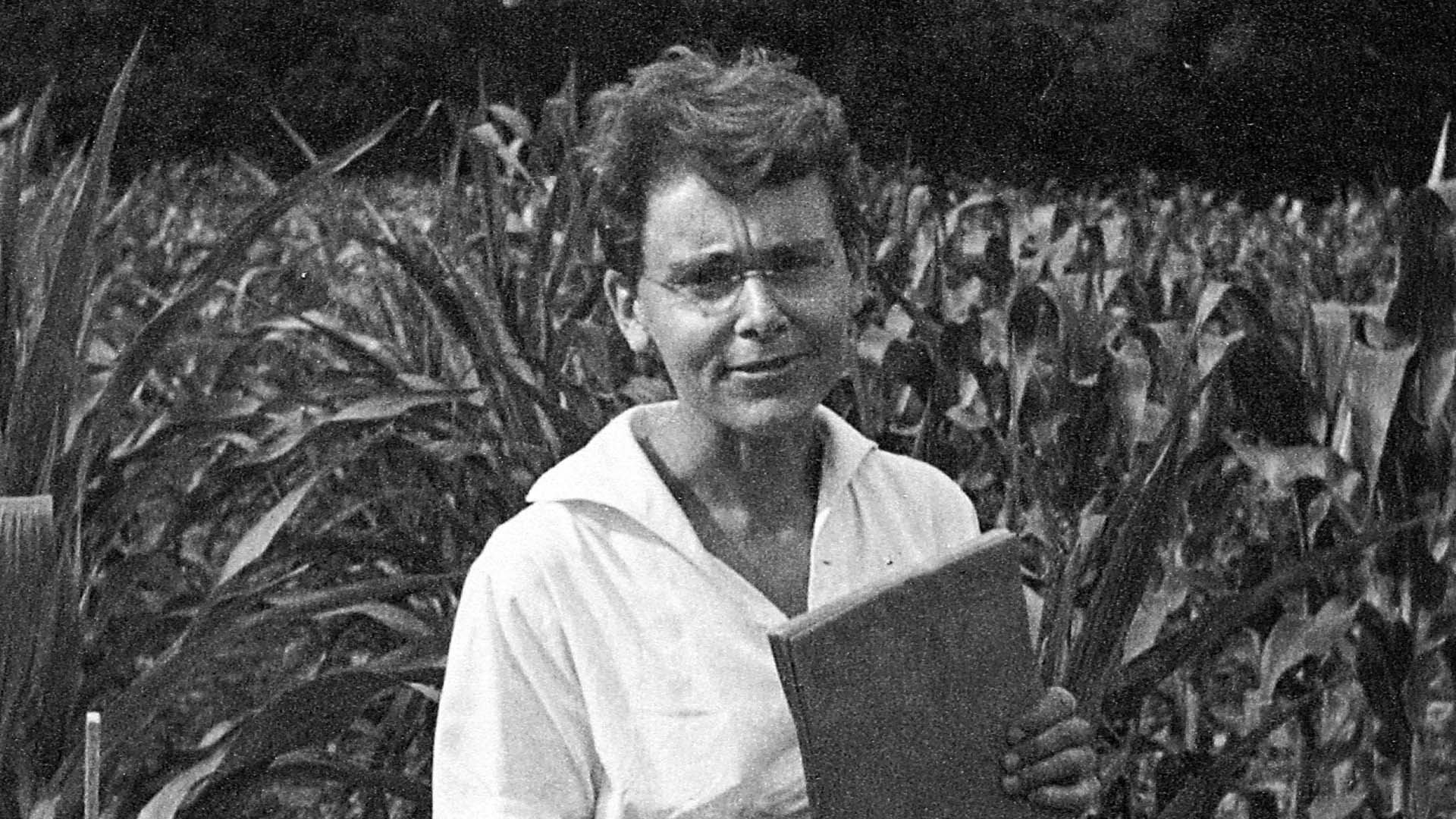Barbara McClintock excelled at a time when there were very few women in science. She faced discrimination throughout her studies and work, such as being asked to sit outside the door while the men discussed her experimental results. She couldn’t understand why women and men couldn’t have better relationships and was so perplexed by it, that she believed there must be a biological reason behind it (Nancy Hopkins, Oral History).
Dr. McClintock was a very spiritual person. She believed in following your intuition, trusting what you see, and thinking “outside the box.” She didn’t particularly like authority figures. According to John Cairns and Alfred Hershey, she used to give the directors of CSHL a very difficult time. Perhaps her dislike of administration was influenced by the discrimination she endured throughout her studies and career from her superiors. Her advice to young scientists was to work at a laboratory and stay away from universities, as she perceived the university setting as being detrimental to scientific research and growth.

Dr. McClintock lived and worked at Cold Spring Harbor Laboratory for more than 50 years. She arrived in 1941 to study mutations in kernels of maize (corn), which led to her discovery of transposable genetic elements. She’s credited with discovering transposable—or “jumping”—genes, which are at the root of genetic engineering. She received the Nobel Prize for her work in 1983.
For more information regarding Barbara McClintock, please visit her personal collections page.
